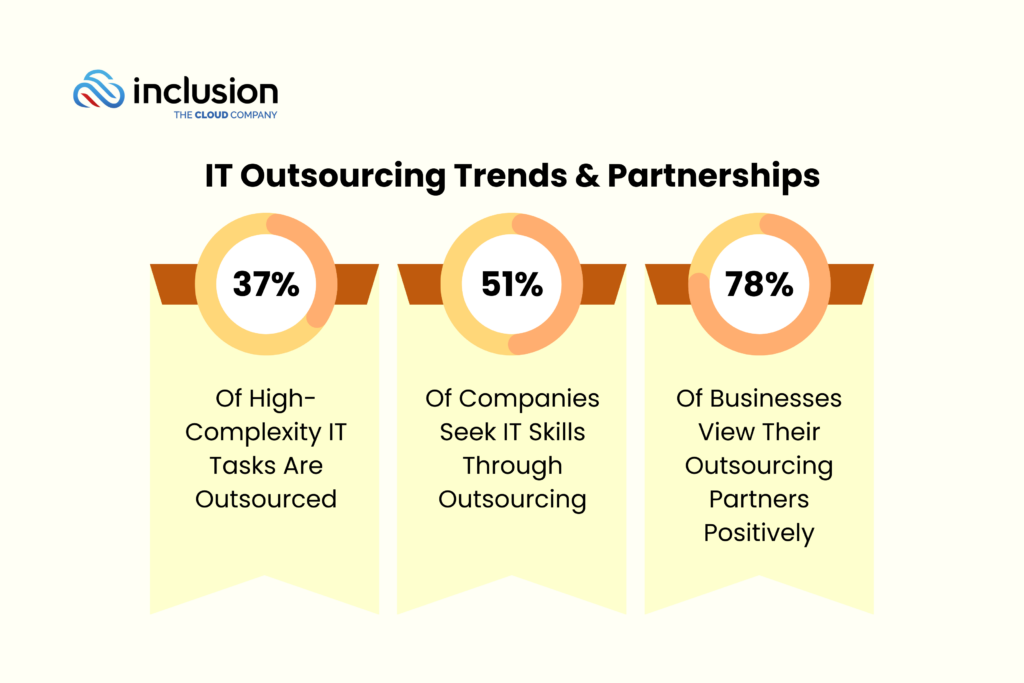In today’s rapidly evolving business landscape, there’s an unprecedented demand for professionals proficient in advanced technologies like AI. Whether in IT, healthcare, supply chain, or other industries, the skills gap presents a major challenge. Companies are actively seeking innovative approaches not just to bridge these gaps but also to boost their teams’ expertise and competitive edge.
One effective strategy that has gained prominence is nearshoring. This article explores how hiring senior IT professionals from Latin America can be a multifaceted solution, that goes beyond traditional cost-saving measures.
I. Addressing Skills Gaps Across Industries
The shortage of sufficiently skilled talent is a pressing concern in numerous industries. According to a recent report by the World Economic Forum, by 2025, automation and a new labor division involving AI and human collaboration “will disrupt 85 million jobs globally in medium and large businesses across 15 industries and 26 economies.” The skills gap brought forth by the fast-paced tech advancements is not confined to a single sector; it is a widespread challenge.
Nearshoring senior IT professionals from Latin America offers a compelling solution. These professionals bring impressive skills and experience to the table, addressing a significant need in the U.S. business landscape. According to a recent report by Zippia, approximately 300,000 U.S. jobs are outsourced each year, highlighting the critical role of outsourcing in the current market while being at the helm of managerial tasks.
In the information technology sector, which is the leading industry for outsourcing, about 37% of high-complexity IT tasks are outsourced. The same report shows that 78% of businesses that outsource work have a positive attitude toward their outsourcing partners. These trends underscore the strategic importance of nearshoring in acquiring talent with high levels of seniority and specialized skill sets.

II. The Complementary Role of Nearshoring in Upskilling
While upskilling current employees remains a critical strategy, it’s important to note what this approach requires. LinkedIn’s Learning Workplace Learning Report 2023 indicates that organizations from different industries are currently facing ever-increasing challenges in effectively implementing large-scale upskilling and reskilling initiatives, especially since AI-related jobs started to permeate every single industry at an extremely fast pace. This complexity highlights the gap between intention and execution in upskilling efforts.
Nearshoring offers a complementary approach by providing immediate access to professionals with advanced skills. Amid these challenges, nearshoring can greatly streamline project initiation times, leading to tangible cost savings and more efficient project delivery. Thus, understanding the importance of nearshoring in bolstering workforce capabilities and helping companies adapt to evolving business demands becomes crucial.
III. Leveraging Data Literacy and Advanced Technologies
In an era where data literacy is paramount, the expertise of senior Latin American professionals is invaluable. Consider this: “83% of executives believe that data is a critical factor for decision-making.” To navigate the data-driven landscape effectively, companies need professionals who can both understand and harness data for insights and innovation.
Senior professionals in Latin America often excel in data science and technology skills. Coursera’s 2023 Global Skills Report highlights that learners from Latin America and the Caribbean lead the world in average scores in these domains, positioning the region as an emerging hub for high-level tech talent. This proficiency in critical areas such as data science aligns with the growing global demand for skills in advanced technologies like AI and machine learning. Their advanced skill set is a significant advantage in nearshoring collaborations, empowering teams, and boosting their seniority, allowing them to not only operate efficiently but also innovate in these cutting-edge fields.
IV. Enhancing Employee Engagement and Team Dynamics
The introduction of senior nearshore collaborators can foster more dynamic and diverse team environments. Insights from Gartner’s research on workforce trends emphasize the value employees place on diverse and enriching job roles. Emphasizing variety in skill sets and tasks, as suggested by organizational psychology, aligns with this perspective.
Moreover, diversity leads to higher employee engagement. A report by Gallup revealed that companies with highly engaged teams experience a 41% reduction in absenteeism and a 17% increase in productivity. Integrating senior professionals from Latin America enhances team dynamics and job satisfaction, contributing to higher engagement levels.
The presence of US onsite service management also plays a key role in this strategy, ensuring effective collaboration and bridging any cultural or operational gaps. This approach is not about replacing local jobs but about enriching team capabilities and leveraging the advantages of shared time zones, language compatibility, and even availability for important meetings and events.
V. Rethinking Education and Training
The evolving technology landscape demands a reevaluation of education and training approaches. According to the World Economic Forum, “65% of children entering primary school today will ultimately work in jobs that don’t yet exist.” This rapid transformation necessitates a workforce that can adapt to new challenges.
Nearshoring contributes to this adaptability. Especially since recent studies like that of Boston Consulting Group show us that companies with diverse teams are more innovative, with those having above-median diversity scores generating 38% more of their revenues from innovative products and services. The cross-pollination of ideas and approaches within teams who work with senior-level nearshore co-workers enhances their ability to tackle emerging technologies, especially as AI is becoming an all-encompassing phenomenon in all industries at large.
Conclusion
In conclusion, nearshoring senior IT professionals from Latin America represents a strategic pivot in today’s business environment. It addresses the global skills gap by bringing in diverse and experienced talent, fostering innovation, and enhancing team dynamics.
The main takeaway is this: Nearshoring high-seniority IT experts from Latin America is not just about cost-effectiveness; it’s about enriching your team’s capabilities and preparing them for future challenges. As AI continues to reshape how industries do business, the value of experienced nearshore professionals cannot be overstated. They are essential for companies looking to remain competitive, adaptable, and forward-thinking.
For more insights and discussions on leveraging nearshoring to boost your team’s seniority, follow InclusionCloud on LinkedIn. Join our community and stay updated with the latest trends and strategies from inside the IT industry.





